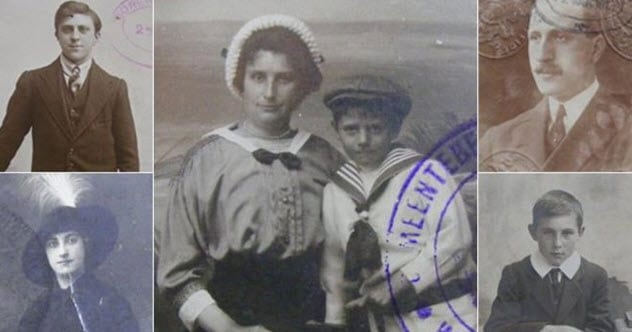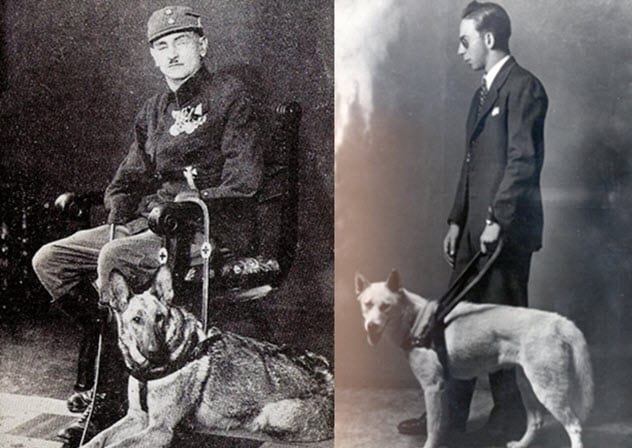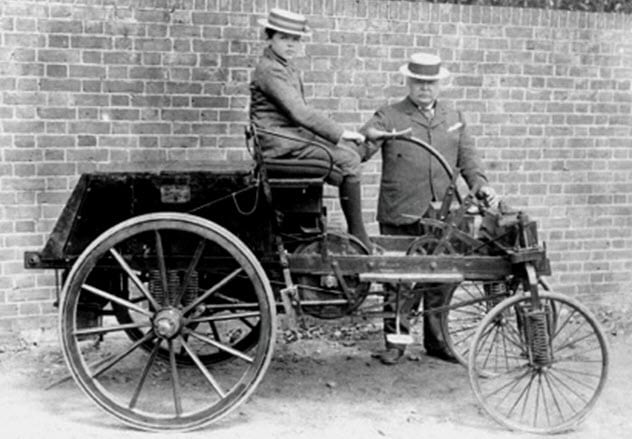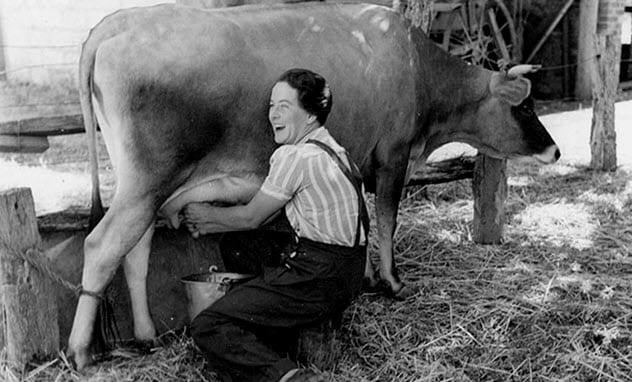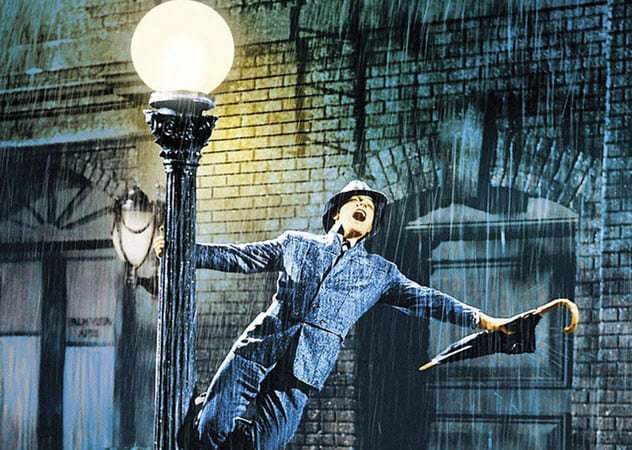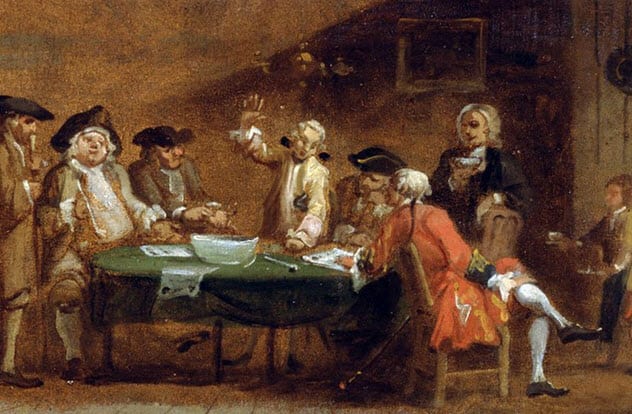10 Movie Concepts You Won’t Believe Exist In Real Life Just like modern people are scared by the idea of self-driving cars, people in the past were scared by some things that they thought were crazy.
10 Passport Photos
What could be a more obvious idea than a passport photo? What better system could there be to identify someone than an actual picture and description of that person? Well, if you were the British government in 1835, a better system was “no system.” The British foreign secretary found the suggestion of describing British citizens on their passports to be “degrading and offensive.” The government didn’t want their citizens to be “perused by foreigners.” British passports remained without photos or descriptions until World War I. This was when they discovered that foreign spies could essentially enter Britain at will. Only then did the government make it mandatory for passports to contain both a photograph and a physical description. This proved controversial. Bassett Digby, an explorer and natural historian, criticized the Foreign Office’s “high-handed methods.” He described his own face as “intelligent” and was outraged when the official form simply described it as “oval.”[1]
9 Guide Dogs
After World War I, Europe was filled with blinded or wounded veterans. To help with the issue, guide dog schools were set up throughout the continent. In Germany, where the first schools were established, public reaction to the idea was largely positive. However, some animal protection organizations did criticize the use of undertrained or misused dogs by beggars or people pretending to be war veterans. In Britain, however, guide dog users faced a much more hostile reaction.[2] Many were scandalized by the “torturous treatment” of the animals and the amount of work they were expected to do. Early trainers even encountered abuse by members of the public trying to stop them. Fortunately, this attitude quickly vanished once the benefits of the program—and the bond between dog and owner—became clear.
8 Cars
The humble automobile is arguably the most influential invention of the modern era. Most cities would collapse overnight without the fleet of cars, vans, and trucks keeping them supplied. Turn back the clock 100 years, however, and you’ll find that a lot of people hated cars. The hatred partly stemmed from the fact that cars were entirely controlled by a single person. In 1896, Alfred Sennett of the British Association for the Advancement of Science issued a warning: A driver of the “horseless carriage . . . has not the advantage of the intelligence of the horse in shaping his path.”[3] A horse would naturally stop or avoid obstacles, but a car couldn’t think for itself if the driver was distracted. In Pennsylvania, the Farmers’ Anti-Automobile Society suggested some extreme rules for motorists. These included sending up flares every mile at night as well as constantly blaring your horn to make your presence known. If horses refused to pass his vehicle, the driver was to immediately dismantle his car and conceal the parts in the surrounding bushes. Britain passed the Locomotives Act of 1865, which required a pedestrian to walk 55 meters (180 ft) ahead of any moving locomotive. That person had to carry a red flag to warn people that the vehicle was coming. This law was significantly loosened in 1896, allowing cars to go up to 19 kilometers per hour (12 mph)! To understand the fear, you have to imagine how different city life was at the turn of the 20th century. In the late 1890s, pedestrians dominated the roads and children would freely run across busy intersections. People were not prepared for the deadly speeds of a car. By 1925, auto accidents accounted for 67 percent of the death toll in US cities. Major newspapers like The New York Times wrote editorials disapproving of “the homicidal orgy of the motor car.” Tens of thousands marched on the streets to protest. The car’s reputation was only saved by lobbyists, who invented the term “jaywalker.” They successfully convinced the public that the deaths were the fault of irresponsible pedestrians.
7 Nostalgia
From Stranger Things and constant film reboots to “Make America Great Again,” nostalgia is fashionable right now. Cut to a few hundred years ago, however, and anyone caught reminiscing about the “good old days” could have been hospitalized or even killed. During the Thirty Years’ War, six nostalgic Spanish soldiers were discharged with el mal de corazon. It later became known as “Swiss illness” after Swiss soldiers were put to death for singing a nostalgic folk song.[4] In 1733, a Russian general told his troops that the first one to be afflicted by “Swiss illness” would be buried alive. It was believed to be dangerous for soldiers to reminisce about home or their loved ones. Their attention should be fully focused on the task ahead. In the 19th and 20th centuries, nostalgia came to be classified as an “immigrant psychosis” and a “mentally repressive compulsive disorder.” The cure for Swiss illness varied considerably. French doctor Jourdan Le Cointe recommended “pain and terror” as an effective treatment. In the US, the approach was a little more humane. Military doctor Theodore Calhoun preferred shame as a treatment, subjecting afflicted individuals to public ridicule and bullying. Thankfully, mental health care has moved on a bit since then.
6 Potatoes
The potato is one of the most versatile and loved foods on the planet, but it wasn’t always this way. When the potato was first introduced to Europe from the Americas, the majority of the population viewed it with suspicion and distrust. King Frederick the Great actually had to order his starving populace to eat tubers during a famine in 1744. A group of English farmers, who associated the potato with Roman Catholic excess, helped popularize the 1765 election slogan “No Potatoes, No Popery!” French people in the late 16th century regarded the potato as fit only for cattle, and some alleged that eating it might cause leprosy. The potato’s savior was Antoine-Augustin Parmentier (of Parmentier potatoes fame), who organized elaborate pro-potato publicity stunts for high-profile guests and foreign dignitaries. The legend goes that Thomas Jefferson was present and this is how America got french fries.[5] Parmentier convinced the French nobility to wear potato blossoms in their hair and to plant tubers on the outskirts of Paris. Allegedly, Parmentier surrounded these potato crops with armed guards to give them the illusion of great value. Then he withdrew the guards at night knowing that the starving populace would steal some potatoes for themselves and increase the potato’s popularity. 10 Strange Architectural Concepts Of The Modern World
5 Movies With Sound
In the modern era, films are often defined by their audio. Would Star Wars be as iconic without its bombastic score or Marvel without its quick-fire banter? Most audiences would be put off by a silent film being released in theaters today. At the start, however, a lot of industry professionals were skeptical of this “audio” nonsense. In the 1920s, Harry Warner, one of the founders of Warner Bros., was shown Vitaphone (an early sound system). He was very impressed by it and remarked that it could save theaters the cost of hiring a live band. When told that it also let actors talk on-screen, Warner replied, “Who the hell wants to hear actors talk? The music—that’s the big plus about this.” Film executive Joseph Schenck thought similarly, once remarking that “talking doesn’t belong in pictures.” Silent movie stars hated these new “talkies” even more than the executives. Clara Bow, a 1920s sex symbol, said, “I hate talkies. They’re stiff and limiting.”[6] Actors were indeed physically limited by the bulky microphones they now had to wear, but many of them were also emotionally limited. They were trained to make large, exaggerated facial expressions and movements to convey their emotions. With sound, the old-school actors just looked silly and theatrical. Even Charlie Chaplin was initially resistant. In 1931, he wrote that the “silent picture . . . is a universal means of expression. Talking pictures necessarily have a limited field.”
4 Library Books
Libraries are one of the miracles of the modern age. Anyone can read books for free there or even take the books home! If libraries were introduced today, everyone would ask what the catch was. That’s exactly what happened in the late 19th century when the US and Britain were gripped by the “great book scare.” Diseases like tuberculosis and scarlet fever were rife in the 1800s, and library books were widely believed to be vectors for disease. Public libraries were a relatively new idea. It was easy to wonder about the people who might have last handled a book and what illnesses they may have had. The United Kingdom’s government entertained the idea and launched a wave of legislation aimed at preventing people from borrowing books or using libraries if they were ill. Libraries across the English-speaking world were expected to disinfect their books, and in 1900, Scranton, Pennsylvania, ordered its libraries to stop all book distribution.[7] By the 1910s, the great book scare had mostly calmed down after it became clear that librarians weren’t showing higher illness rates. Readers will be happy to know that modern studies have shown that library books “do not serve as a potential source of transmission” for bacteria.
3 Shopping Carts
On the surface, the shopping cart seems boring. It’s a big basket on wheels in which you can put your shopping items, so what’s the controversy? In fact, the shopping cart marked a major shift in the way people used stores. Before the 1920s, most shops didn’t let you pick your own goods. Instead, a store employee did it for you behind a counter. This changed with early shopping magnates like Sylvan Goldman, who pioneered the revolutionary “self-service” concept. This was a lot cheaper than having employees do it, but it was limited by how much a customer could physically carry. To increase the amount a shopper could carry, the humble shopping trolley was born. Goldman sent them to all his stores. He hired actors to hype up the newfangled shopping carts, stationing “an attractive girl” near the store entrance and planting actors around the store to show how they worked. Even with this marketing push, the idea didn’t take off as easily as Goldman had hoped. In a 1977 interview, he claimed that women refused to use the carts because the ladies were sick of pushing baby carriages around all day. On the other hand, men took offense at the idea that they weren’t strong enough to carry all their shopping in a basket.[8]
2 Coffee
Since it was first grown and traded, coffee has been controversial. Religious authorities in Mecca, Cairo, and Istanbul made many attempts to ban it. Some religious officials argued that the physical effects of coffee could be compared to alcohol, which Muslims are forbidden to drink. Perhaps more importantly, coffee meant coffeehouses. They were seen as dangerous gathering places where people could openly discuss topics like religion or politics. A couple of hundred years later, coffeehouses were seemingly still hated in England. In 1674, “The Women’s Petition Against Coffee” was a comedy pamphlet supposedly published by a group of annoyed women. They claimed that coffee made their husbands too talkative, writing that “they sup muddy water, and murmur insignificant notes till half a dozen of them out-babble an equal number of us at gossipping.” They also complained that coffee reduced their husbands’ sex drive: “[S]he approaches the nuptial bed, expecting a man that . . . should answer the vigour of her flames, she on the contrary should only meet a bedful of bones.”[9] Or did they? Instead of being written by actual women, this pamphlet was probably made as part of King Charles II’s attacks on coffee and coffeehouses. Much like Arabian cultures, he saw coffee as a seditious drink that made his subjects rebellious. His father being executed by rebellious subjects probably didn’t help his paranoia, and it shouldn’t come as a surprise that he tried to ban coffeehouses a year later.
1 Comic Books
Whether you like it or not, we live in a world where superheroes and comic books dominate pop culture. Go back to the post–World War II era, however, and there was a genuine fear of comic books. The 1940s were the height of what is now called the Golden Age of Comic Books, with almost 60 million comics being sold a month in the US. However, popularity brought greater scrutiny. The war had made violence in comic books more acceptable, and there were even popular violent comics written by women and black people! Psychiatrist Fredric Wertham started a crusade against comics by arguing that comic book readers became “sexually aggressive.” He made several unsubstantiated claims, such as suggesting that Batman and Robin represented “a wish dream of two homosexuals living together.” His ideas eventually made their way to a Senate subcommittee where Wertham said, “I think Hitler was a beginner compared to the comic book industry.”[10] To appease the growing fear about comics, several publishers formed the Comics Code Authority, which cracked down on violence, cursing, anti-authority story lines, and any comics dealing with racial or religious prejudice. Even with these extraordinary measures, the public wasn’t happy. The 1940s and ’50s saw public comic book burning across America. Tens of thousands of comics were destroyed. 10 Brain-Breaking Scientific Concepts
